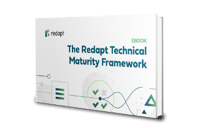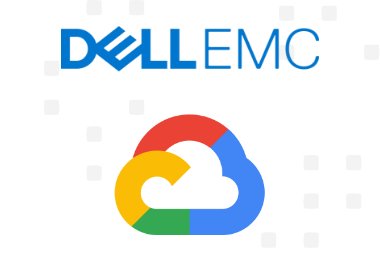BLOG
The latest in infrastructure, technology, and security
From emerging innovations to real-world applications, we cover what helps leaders navigate complexity, drive transformation, and make smarter decisions in a rapidly evolving landscape.
For an increasing number of organizations, the answer is a definite yes.
Fueling this trend are a number of factors, including a desire for greater flexibility, cost-effective ways to scale on demand, and reduced or waning concerns about security and governance of data in the cloud.
Most of all, organizations are increasingly looking for more effective ways to put unstructured data to work.
On this page, we’ll be taking a look at some of the ways, and the reasons why, organizations are employing unstructured data and the hybrid cloud to make smarter decisions.

Click here to download this page as a PDF to refer to later.
Download Guide as PDF
At any given moment of any given day, billions of connected devices are creating data.
The vast majority of this data is unstructured—information with no predefined data model. Data like emails, Word documents, photos, and audio files.
For organizations, this steady flow of unstructured data provides both opportunities and challenges. The opportunities include the ability to use advanced technologies like Artificial Intelligence (AI) and Machine Learning (ML) to:
Yet, there are challenges that come with these, including the need to effectively store unstructured data and make it accessible for analytics, while still maintaining proper governance and security controls.
Embracing a hybrid cloud strategy can provide organizations with a remedy to both of these challenges.
The ability to scale as needed, combined with being able to maintain governance and security on-premises, allows for greater flexibility in how unstructured data is managed and put to work.
Beyond solving for storage and management, the hybrid cloud can also deliver:
With a hybrid cloud strategy, optimizing both data and applications is critical to success.
Even unstructured data, which by its nature is disorganized, needs to be properly cleansed to remove noise and sensitive details. It also needs to be managed in a way that makes it available to every party within an organization that needs to use it.
Meanwhile, applications an organization relies on must be assessed for use in a cloud environment. This is because many of those applications may not be suited for the cloud or could be replaced by better performing apps. You can learn more about application optimization and modernization in our whitepaper on the subject.
At a high level, the benefits of having an application optimized for the cloud include:
Elasticity from apps being able to scale with increased use and demand, then scale back down automatically as usage decreases
Better use of resources, as well as a substantial reduction of IT costs
Greater flexibility in how teams work, including freedom to customize, utilize automation, and make applications mobile
Without optimization of both data and applications, a hybrid cloud strategy risks failing.
Advanced tools like AI and ML are only as effective as the data they have access to—and their ability to utilize the right data—and a reliance on legacy applications will fail to deliver the benefits of the cloud side of a hybrid approach.
As with the implementation of any new platform or technology, the process of transitioning to a hybrid cloud approach requires a solid roadmap. That roadmap should start with a thorough assessment of an organization’s technical maturity.
Boiled down for these pages, a technical maturity assessment is necessary because without a system for tracking, measuring, and improving a hybrid cloud solution, you can’t solve technical problems. At best, you may just put out individual fires. Through the assessment, you can identify opportunities for improvement and guide your organization toward implementing the right solutions, including processes and best practices.

You can learn more about implementing an assessment in our eBook The Redapt Technical Maturity Framework.
Following a technical maturity assessment, the next step is for an organization to understand what it is trying to accomplish by implementing a hybrid cloud. This includes identifying initial projects that would benefit from the hybrid cloud, ways to measure success, and how much the organization is willing to invest in the platform.

Click here to download this page as a PDF to refer to later.
Download Guide as PDFCreating and implementing a hybrid cloud strategy is often outside the reach of organizations. This can be due to a lack of in-house expertise, unavailable resources to spend the time on developing a strategy, or both.
When looking for a technology provider to partner with, we recommend asking the following four questions:
Once a hybrid cloud solution is up and running, managing its performance becomes the focus.
Without focusing on managing performance, it can be easy to over-provision resources, miss opportunities due to disorganized data, and fail to properly follow guidance and security protocols. For unstructured data, this means having the capabilities in place to organize data for AI and ML use. That includes:Traditional scaling of storage means having systems in place to expand capacity as needed. While the public cloud can alleviate some of this burden, it can also be expensive to fully rely on.
There are a number of scaling out storage solutions available to meet capacity needs. One we often recommend is Dell EMC’s Isilon Cloud One FS, which, when paired with a cloud provider such as the Google Cloud Platform (GCP), can help an organization quickly and effectively scale as needed.

Most of all, Isilon is software-defined storage, which means it can easily be applied to on-premises and the cloud without the need for expensive hardware upgrades. Because of this, Isilon is perfectly tailored for the hybrid cloud.
Unstructured data is only going to increase in the coming years, as more and more connected devices—and people using them—continue to skyrocket.
For many organizations, a hybrid cloud solution can be key to keeping up with the flood of information as well as putting it to use with advanced technologies like AI and ML.
In order to effectively adopt a hybrid cloud solution, organizations need to:
To get started on your own organization’s journey to the hybrid cloud, contact one of Redapt’s experts today.